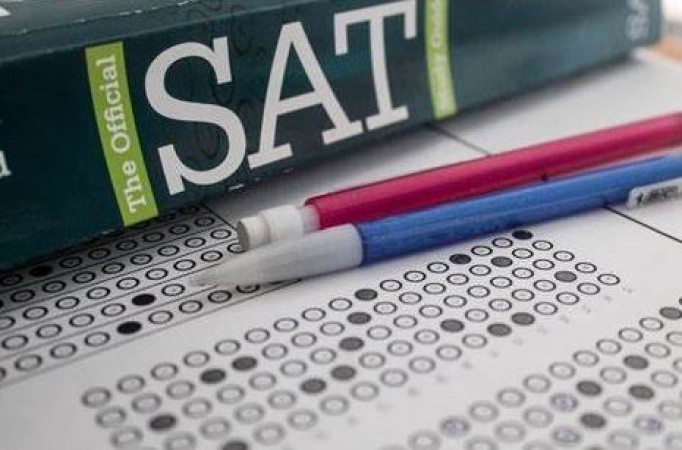
The SAT (Scholastic Assessment Test) is a standardized exam widely used for college admissions in the United States. It is designed to assess a student's readiness for higher education by evaluating their knowledge and skills in key subject areas. This article will provide an in-depth overview of the SAT, including its purpose, structure, scoring, and tips for preparation.
1. Introduction to the SAT
The SAT is a standardized test administered by the College Board, a nonprofit organization. It measures a student's proficiency in critical reading, writing, and math skills necessary for success in college. The test is typically taken by high school students during their junior or senior year.
2. Purpose of the SAT
The primary purpose of the SAT is to provide colleges and universities with a standardized measure of a student's academic readiness. Admissions officers use SAT scores, along with other factors such as GPA, extracurricular activities, and personal essays, to evaluate applicants and make informed decisions about their suitability for admission.
3. Structure of the SAT
The SAT consists of four main sections: the Reading Test, Writing and Language Test, Math Test (with a calculator), and an optional Essay. Each section is further divided into smaller components, and the total testing time is approximately three hours without the essay or four hours with the essay.
3.1 Reading Test
The Reading Test evaluates a student's ability to comprehend and analyze written passages from various sources. It assesses skills such as identifying main ideas, understanding vocabulary in context, and making inferences.
3.2 Writing and Language Test
The Writing and Language Test measures a student's command of standard written English. It focuses on grammar, punctuation, sentence structure, and effective use of language. This section includes multiple-choice questions that require students to edit and revise given passages.
3.3 Math Test
The Math Test assesses a student's mathematical skills and reasoning abilities. It covers topics such as algebra, geometry, statistics, and data analysis. Some questions allow the use of a calculator, while others do not.
3.4 Essay (Optional)
The Essay section, although optional, is recommended by many colleges and universities. It provides students with an opportunity to showcase their analytical and persuasive writing skills. The essay prompt presents a passage and asks students to analyze its argument and provide a well-structured, evidence-based response.
4. Scoring of the SAT
The SAT is scored on a scale of 400 to 1600, with each main section (Reading, Writing and Language, Math) contributing a maximum of 800 points. The Essay is scored separately on a scale of 6 to 24. The total score reflects a student's performance across all sections and is a crucial factor considered by colleges during the admissions process.
5. Importance of the SAT
The SAT plays a significant role in college admissions, as it provides a standardized measure that helps colleges compare students from diverse educational backgrounds. While SAT scores are not the sole determinant of admission, they can heavily influence an applicant's chances of acceptance, scholarships, and academic opportunities.
6. Tips for SAT Preparation
To maximize your SAT score, it is essential to prepare strategically. Here are five tips to help you excel on the exam:
6.1 Familiarize Yourself with the Test Format
Get acquainted with the structure, timing, and question types of each section. Understanding the exam format will enable you to manage your time effectively and identify areas where you need additional practice.
6.2 Develop Strong Reading and Writing Skills
Enhance your reading comprehension and writing abilities by regularly reading challenging texts, practicing critical analysis, and honing your grammar and vocabulary skills. These skills are crucial for success in the Reading and Writing and Language sections.
6.3 Master Math Concepts and Problem-Solving Techniques
Review and reinforce fundamental math concepts, formulas, and problem-solving strategies. Practice solving math problems under timed conditions to improve your speed and accuracy.
6.4 Practice Time Management
Since the SAT is a timed test, it is essential to practice managing your time effectively. Take timed practice tests to simulate the real testing conditions and develop strategies for pacing yourself.
6.5 Take Advantage of Available Resources
Utilize SAT preparation materials, such as study guides, online resources, and practice tests. Consider enrolling in test prep courses or working with a tutor to gain additional guidance and support.
7. Conclusion
The SAT is a crucial component of the college admissions process, providing colleges with standardized data to assess a student's academic potential. By understanding the purpose, structure, and scoring of the SAT and following effective preparation strategies, students can enhance their chances of achieving a competitive score and gaining admission to their desired colleges and universities.
Dr. BS Tomar: Why Does India Need More Research Institutes to Compete With Developed Countries?
Celebrating Malala Yousafzai's Birthday: A Tribute to Courage, Education, and Advocacy
Unveiling the Controversies: Malala Yousafzai's Journey from Shooting Survivor to Global Figure